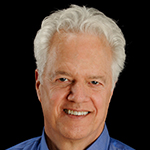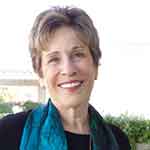Hope for cure has traditionally been the patient’s best friend and the clinician’s strongest ally. Clinicians may avoid discussing their patients’ poor prognoses with them for fear that this might destroy their hopes or cause depression. [1,2] However, patients with serious illness usually want to hear the truth from their physicians and benefit from knowing the facts. [3]
Clinicians’ reticence to disclose grave prognoses may originate from a fundamental misunderstanding of the nature and dynamics of hope. In advanced illness, hope for cure must eventually give way to grief, because dying cannot ultimately be prevented. Our work with patients near the end of life and our study of the research literature concerning hope in advanced illness indicate that clinicians who reveal the truth to their patients in a timely, honest, compassionate manner may help them engage constructively with their grief, replacing unrealistic hopes for recovery with a more profound and resilient kind of hope.[4]
Hope for cure is an unalloyed blessing, born of scientific medicine’s relatively recent dominance over diseases that throughout history had been implacably lethal. This blessing may be mixed, however, when hope for cure or recovery thrusts beyond medicine’s capacity to reverse the process of illness. This false hope can cause clinicians to recommend, or patients to demand, treatments that are likely to be toxic, potentially ineffective and costly.
In today’s practice, two distinct phases of hope each occupy a place on the continuum of care in advanced illness. Initially, “focused hope” provides indispensable support to patients yearning for cure or relief from disease. However, this kind of hope can only be maintained by concentrating on outward, tangible goals such as cure or recovery. Like any of the worldly objects on which its existence depends, focused hope may be gained or lost. It has a dark side: if overextended, it can prevent patients from facing their own mortality, denying them valuable opportunities for shared decision making and fully-informed consent for treatment.
Beyond objective, focused hope, another type that we term “intrinsic hope” lies buried in the human psyche. It is an inborn trait that all humans share. Although it may lie dormant, hidden under layers of strongly held emotion or denial, it can emerge unexpectedly after longed-for outcomes fail to materialize and focused hope fades. [5] As opposed to outer-directed focused hope, intrinsic hope centers on subjective, personal issues. For example, patients may hope not to be a burden, or to give and receive love in relationships with family and friends.
Clinicians naturally rely on focused hope as it encourages patients to endure the rigors of treatment. Because intrinsic hope is less familiar, however, clinicians may overlook its therapeutic potential. Intrinsic hope often emerges behind closed doors, in the safety and comfort of home, rather than amidst the clamor of the hospital. With the recent growth of palliative care in home and community settings, clinicians are now gaining more experience with intrinsic hope.
Intrinsic hope may wax and wane, but because its source is internal, it can spring eternal. As death approaches, it may evolve into a state of living in the moment. The lead investigator of a US national clinical trial for acute leukemia in adults describes this as “the peace, the comfort, the joy, and the sense of completion when a person chooses to live unencumbered by the demands of modern medical therapy.” [6]
The distinction between focused and intrinsic hope mirrors the age-old struggle between the demand for doing versus the wisdom of being. Today, when one treatment for advanced disease fails, clinicians and patients alike may search avidly for the next regimen or attempt to enroll in a clinical trial. Yet on occasion it might be wiser to apply the principle of clinical inertia, more plainly stated as, “Don’t just do something—stand there!” [7] As patients’ capacity for goal-setting and problem-solving wanes with the inevitable advancement of chronic illness, the “being” component of intrinsic hope assumes increasing importance. This applies not just to patients’ states of being, but also to the quality of personal presence that connects clinicians with their patients. [8]
Clinicians’ personal presence may be expressed through timely, honest, compassionate disclosure of the truth to patients with advanced illness. Truth-telling does not simply trigger hope’s elimination, but rather its evolution. When clinicians tell the truth wisely, perhaps aided by knowledge gained from one of a growing number of training programs, it can help patients understand and accept their limited life expectancy without harming their well-being or the clinician-patient relationship. [9,10] Although honest disclosure of challenging information may initially activate grief or depression, most patients tend to recover their emotional equilibrium and renew their hopes without recurrent depressive episodes. [11]
Certain physical, emotional and spiritual interventions may help unlock intrinsic hope. First, pain is hope’s bitter enemy; it can trigger hopelessness, depression, suicidal ideation, and desire for assisted death. [12] Aggressive symptom management, readily achieved through palliative care and hospice referral, removes a formidable barrier to the development of intrinsic hope.
Second, clinicians may employ truth-telling as the first step in a process of emotional and psychological education. Patients with life-threatening illness can maintain hope through two mechanisms: positive reappraisal, wherein they let go of unrealistic hopes and adopt new ones; and transcendence, whereby they find meaning and purpose by reaching both outward to others, including their clinicians, and inward to find a personal core of awareness and strength. [13] When clinicians disclose to their patients the true nature of their illness (bearing in mind that patients with different diseases may hold different hopes), along with prognosis and all options for treatment including hospice, they do more than merely impart the facts. [14] They set in motion an educational process that, bolstered by engagement and collaboration, can lead patients to develop their own intrinsic hopes.
This kind of spiritual care does not require specialized training; many clinicians instinctively provide it to patients near the end of life. Impending death may subject patients to dark feelings and fears that can overwhelm even their stoutest hopes. Clinicians who silently offer a fully empathic presence—by conveying equanimity, partnership, and non-abandonment—may hold the faith for patients who, for a time, are unable to do it for themselves. This can help patients heal emotionally and spiritually even when, or especially when, clinical cure is no longer possible.
 Brad Stuart is chief medical officer at the Coalition to Transform Advanced Care (C-TAC) in Washington, DC.
Brad Stuart is chief medical officer at the Coalition to Transform Advanced Care (C-TAC) in Washington, DC.
 Avis Begoun is a clinical psychologist with a private practice in Palo Alto, California. One of her specialties is working with cancer patients. She is a cancer survivor.
Avis Begoun is a clinical psychologist with a private practice in Palo Alto, California. One of her specialties is working with cancer patients. She is a cancer survivor.
 Leonard Berry is the Regents’ Professor at Texas A&M and is a Senior Fellow of the Institute for Healthcare Improvement.
Leonard Berry is the Regents’ Professor at Texas A&M and is a Senior Fellow of the Institute for Healthcare Improvement.
Competing interests: None declared.
References:
1. Lamont EB, Christakis NA. Prognostic disclosure to patients with cancer near the end of life. Ann Int Med 2001;134:1096-1105. doi:10.7326/0003-4819-134-12-200106190-00009. pmid:11412409.
2. Sullivan MD. Hope and hopelessness at the end of life. Am J Geriatr Psychiatry 2003;11:393-405. pmid:12837668
3. Mack JW, Smith TJ. Reasons why physicians do not have discussions about poor prognosis, why it matters, and what can be improved. J Clin Oncol 2012;30:2715-2717. doi:10.1200/JCO.2012.42.4564. pmid: 22753911.
4.Sisk B. Time will tell. JAMA 2015;313:1107-1108. doi: 10.1001/jama.2015.0837. pmid: 25781437.
5. Thurston A. The unreasonable patient. JAMA 2016;315:657-658. doi:10.1001/jama.2015.17059. pmid: 26881366.
6. Cripe LD. Hope is the thing with feathers. JAMA 2016;315:265-266. doi:10.1001/jama.2015.18557. pmid: 26784772.
7. Ofri D. When doing nothing is the best medicine. New York Times, October 20, 2011. http://well.blogs.nytimes.com/2011/10/20/when-doing-nothing-is-the-best-medicine/?_r=0 (Accessed April 2, 2017)
8. Herth KA, Cutliffe JR. The concept of hope in nursing 3: hope and palliative care nursing. Brit J Nurs 2002;11(14):977-983. pmid:12165729.
9. Pham AK, Bauer MT, Balan S. Closing the patient-oncologist communication gap: a review of historic and current efforts. J Canc Educ 2014;29:106-113. doi:10.1007/s13187-013-0555-0. pmid:24092531.
10. Enzinger AC, Zhang B, Schrag D, Prigerson HG. Outcomes of prognostic disclosure: associations with prognostic understanding, distress, and relationship with physician among patients with advanced cancer. J Clin Oncol 2015;33:3809-3816. doi:10.1200/JCO.2015.61.9239. pmid:26438121.
11. Meyer F, Fletcher K, Prigerson HG, et al. Advanced cancer as a risk for major depressive episodes. Psycho-Oncol 2015;24:1080-1087. doi:10.1002/pon.3722. pmid:25389107.
12. Emanuel EJ, Fairclough DL, Emanuel LL. Attitudes and desires related to euthanasia and physician-assisted suicide among terminally ill patients and their caregivers. JAMA 2000;284:2460-2468. pmid:11074775.
13. Duggleby W, Hicks D, Nekolaichuk C, et al. Hope, older adults, and chronic illness: a metasynthesis of qualitative research. J Advance Nurs 2012;68:1211-1223. doi:10.1111/j.1365-2648.2011.05919.x. pmid:22221185.
14. Kendall M, Carduff E, Lloyd A, et al. Different experiences and goals in different advanced diseases: comparing serial interviews with patients with cancer, organ failure, or frailty and their family and professional carers. J Pain Sympt Manage 2015;50(2):216-224. doi:10.1016/j.jpainsymman.2015.02.017. pmid:25828558
